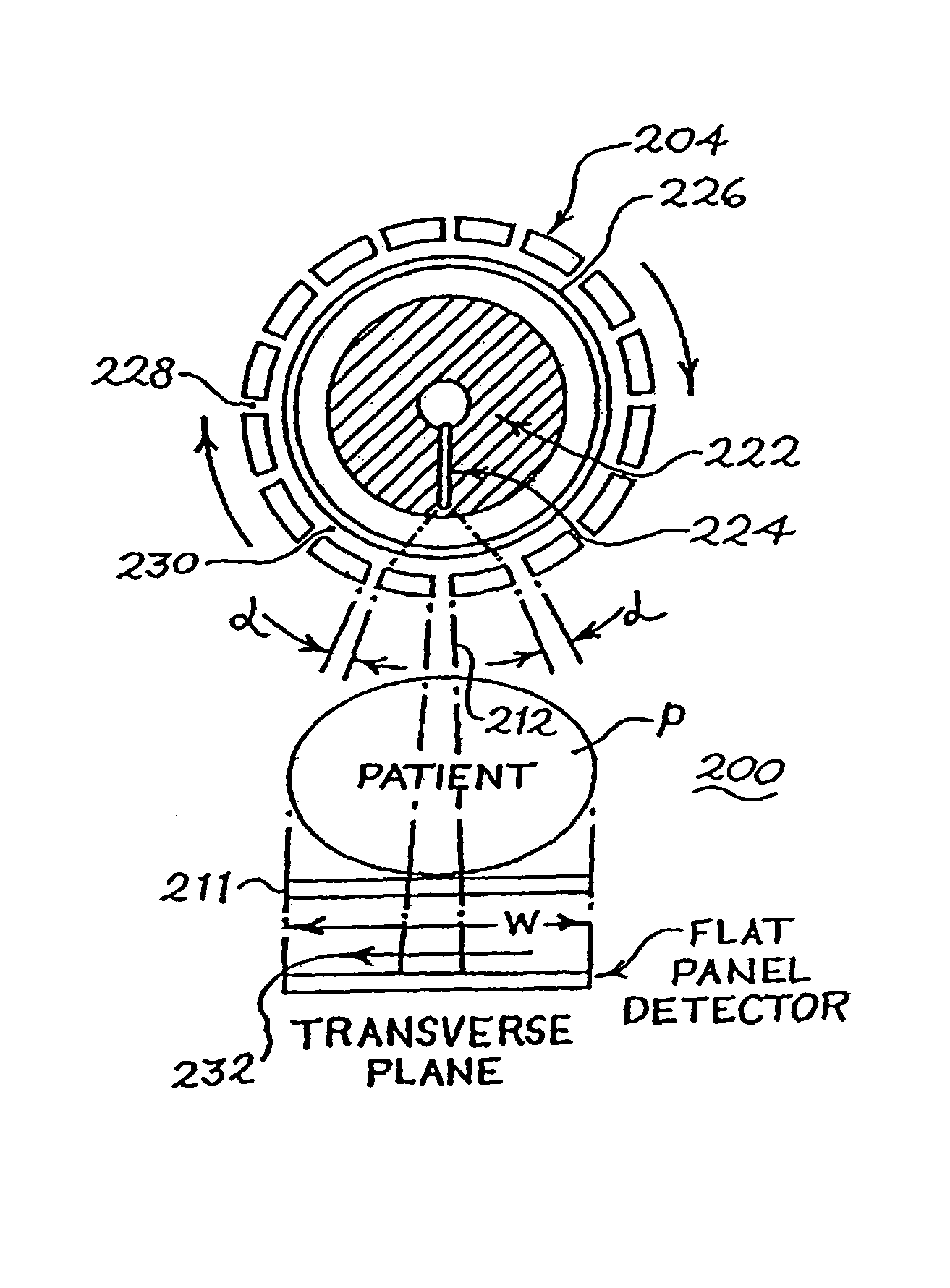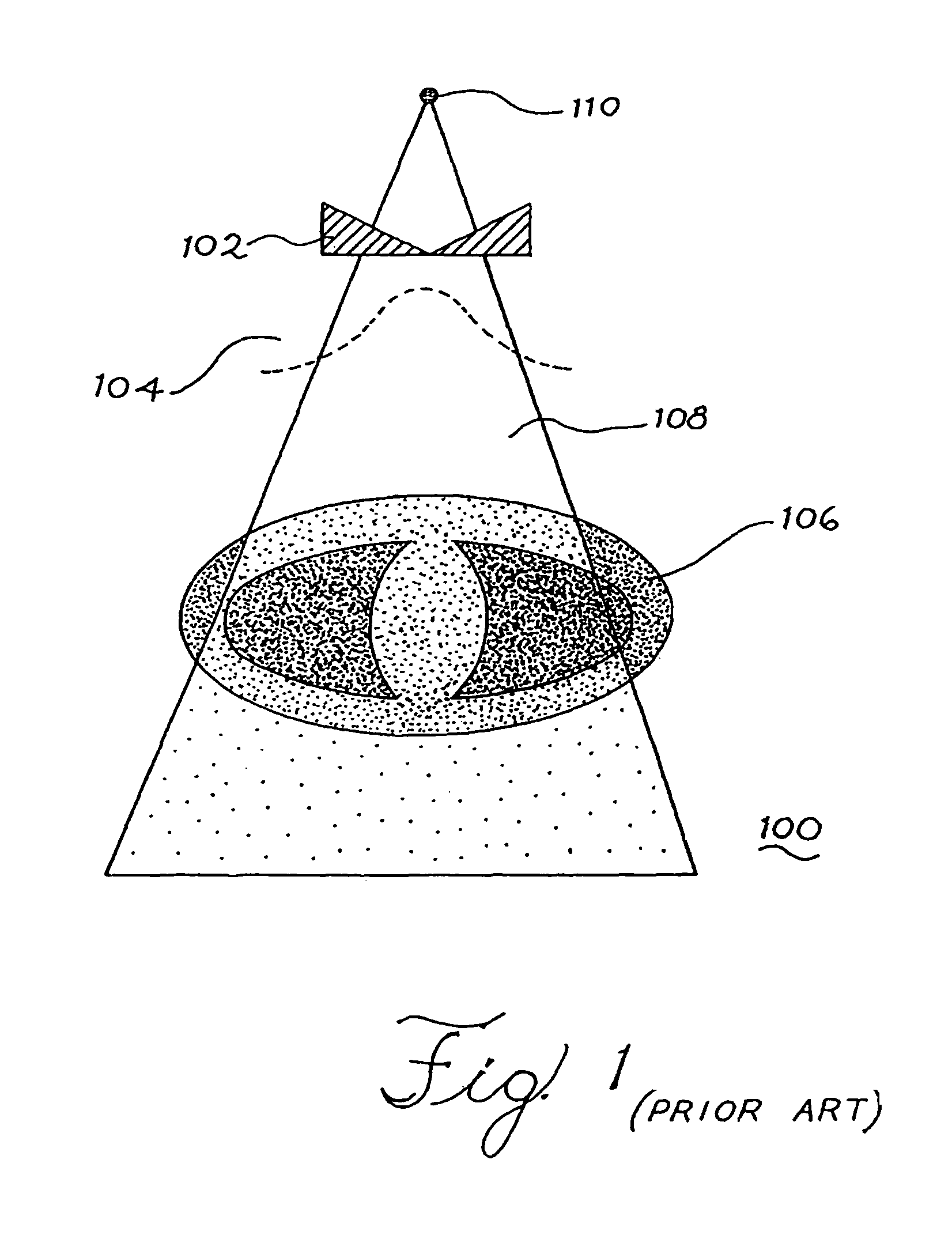Tetrahedron beam computed tomography
a computed tomography and tetrahedron beam technology, applied in the field of imaging systems, can solve the problems of reducing the signal-to-noise ratio, reducing the image quality, and reducing the time required for scatter calculation, so as to minimize the radiation dose the patient receives, without the loss of the signal-to-noise ratio or additional radiation exposure to the patient.
- Summary
- Abstract
- Description
- Claims
- Application Information
AI Technical Summary
Benefits of technology
Problems solved by technology
Method used
Image
Examples
Embodiment Construction
[0057]Referring now to FIGS. 2-16, various imaging systems embodying the principles of the present invention are illustrated, wherein like elements are denoted by like numerals. In particular, FIG. 2a shows an embodiment of a wall-mounted scanning slot cone-beam computed tomography system 200 and megavoltage portal imaging system 300 that can be adapted to be used with the cone-beam computed tomography and megavoltage portal imaging system sold under the tradename Synergy by Elekta of Crawley, the United Kingdom. The system 200 may be retrofitted onto an existing or new radiation therapy system that includes a separate radiation therapy x-ray source. The cone-beam computed tomography system 200 includes an x-ray source, such as x-ray tube 202, a rotary collimator 204 and a flat-panel imager / detector 206 mounted on a gantry 208.
[0058]As shown in FIG. 2a, the flat-panel imager 206 can be mounted to the face of a flat, circular, rotatable drum 210 of the gantry 208 of a medical linear ...
PUM
 Login to View More
Login to View More Abstract
Description
Claims
Application Information
 Login to View More
Login to View More - R&D
- Intellectual Property
- Life Sciences
- Materials
- Tech Scout
- Unparalleled Data Quality
- Higher Quality Content
- 60% Fewer Hallucinations
Browse by: Latest US Patents, China's latest patents, Technical Efficacy Thesaurus, Application Domain, Technology Topic, Popular Technical Reports.
© 2025 PatSnap. All rights reserved.Legal|Privacy policy|Modern Slavery Act Transparency Statement|Sitemap|About US| Contact US: help@patsnap.com



